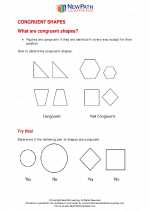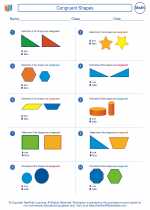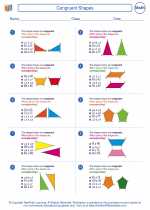Equation
An equation is a mathematical statement that shows the relationship between two expressions that are equal. It contains an equal sign (=) and may include variables, constants, and mathematical operations such as addition, subtraction, multiplication, and division.
Types of Equations
- Linear Equations: These are equations where the highest power of the variable is 1. They can be written in the form ax + b = c, where a, b, and c are constants.
- Quadratic Equations: These are equations where the highest power of the variable is 2. They can be written in the form ax2 + bx + c = 0, where a, b, and c are constants.
- Exponential Equations: These are equations where the variable is in the exponent. They can be written in the form ax = b, where a and b are constants.
Solving Equations
To solve an equation means to find the value of the variable that makes the equation true. The goal is to isolate the variable on one side of the equation.
Steps for Solving Equations
- Combine Like Terms: Simplify both sides of the equation by combining like terms.
- Isolate the Variable: Use inverse operations (opposite operations) to isolate the variable on one side of the equation.
- Check Your Answer: After solving the equation, substitute the value of the variable back into the original equation to verify that it satisfies the equation.
Example
Let's solve the equation 2x + 5 = 11.
- Combine Like Terms: 2x + 5 = 11 → 2x = 11 - 5 → 2x = 6
- Isolate the Variable: 2x = 6 → x = 6/2 → x = 3
- Check Your Answer: Substitute x = 3 back into the original equation: 2(3) + 5 = 11 → 6 + 5 = 11 → 11 = 11 (True!)
Study Guide
To study equations, it's important to understand the different types of equations and how to solve them. Here are some key points to focus on:
- Identify the type of equation (linear, quadratic, exponential).
- Understand how to combine like terms and use inverse operations to isolate the variable.
- Practice solving equations with various levels of complexity.
- Verify solutions by checking them in the original equation.
Remember, practice is key to mastering equations. Work through plenty of examples and seek help if you encounter difficulties.
.◂Math Worksheets and Study Guides Fifth Grade. Congruent Shapes
Study Guide Congruent Shapes
Congruent Shapes  Worksheet/Answer key
Worksheet/Answer key Congruent Shapes
Congruent Shapes  Worksheet/Answer key
Worksheet/Answer key Congruent Shapes
Congruent Shapes  Worksheet/Answer key
Worksheet/Answer key Congruent Shapes
Congruent Shapes 

 Worksheet/Answer key
Worksheet/Answer key
 Worksheet/Answer key
Worksheet/Answer key
 Worksheet/Answer key
Worksheet/Answer key

The resources above cover the following skills:
Geometry (NCTM)
Analyze characteristics and properties of two- and three-dimensional geometric shapes and develop mathematical arguments about geometric relationships.
Identify, compare, and analyze attributes of two- and three-dimensional shapes and develop vocabulary to describe the attributes.
Explore congruence and similarity.